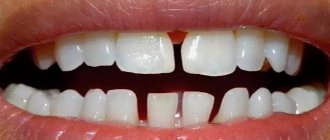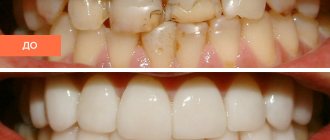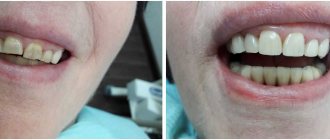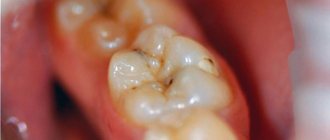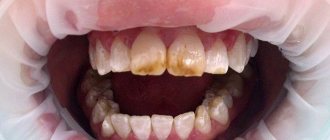1058
The preserved tooth root and the destroyed coronal part leave the dentist with not a large choice of treatment techniques.
Root removal, tooth restoration using a core tab, the use of flexible reinforcing tapes glued into the tooth canal, and installation of an intracanal pin.
The last treatment method is the most popular.
General presentation and purpose
The pharmaceutical market offers a huge number of intracanal pins of different materials and designs. Unimetric products from the Swiss company Maillefer are known to endodontists around the world.
The company was founded in 1889, and is named after its founder, August Maillefer. In 1995 it became part of the Dentsply International corporation. Registered in ISO 9001 and EH 46001 and certified as a European manufacturer.
Along with Unimetric products, the company produces fiberglass pins EasyPost, EasyPostLux, plastic ashless Uniclip, titanium and steel Radix-Anker.
Unimetric pins are designed for installation in a tooth canal for the purpose of restoring the coronal part of pulpless teeth.
They are a conical rod with a helical relief on the outer surface and a rectangular head with an end key groove.
Main characteristics
If we consider the characteristics of the product from the point of view of a specialist, the main points are:
- Material. Very durable, lightweight titanium, which is fully biocompatible with the human body, non-toxic and chemically resistant to biological fluids.
The modulus of elasticity is lower than that of steel, but higher than that of gold.The disadvantages of titanium pins include low radiopacity and relatively high cost. (The Unimetric 0.8 model is available not only in titanium, but also in stainless steel).
- Shape : conical.
- Type of fastening in the tooth canal - passive, anchor (fixed with cement).
- The head is square, in two length variations (s – short and l – long).
- The marking is colored in the form of multi-colored circles.
- The number of uses is one-time (Post).
Reuse is not recommended, although it is technically possible. And if in case of emergency you have to resort to this, it is necessary to pay increased attention to the disinfection of the pin in order to avoid infection of the oral cavity.
What is a tooth contact point and the importance of its restoration.
Read here about the design features of Glassix pins.
At this address https://www.vash-dentist.ru/krasota-i-uxod/narashhivanie/shtiftyi/guttaperchevyie-kornevoe-plombirovanie.html we’ll talk about the pros and cons of gutta-percha points.
Care
In the postoperative period, which can last up to several months, the patient must adhere to a number of recommendations. Thanks to this, he will be able to protect the pin prosthesis from damage and avoid unwanted complications.
Everything you need to know about gutta-percha points
Among the most important of them, experts highlight the following:
- During the first few days, rinse your mouth with antiseptic agents.
- In the evening, clean your teeth from food debris and plaque using dental floss.
- In the first few weeks after installation, exclude from the diet foods that require excessive jaw activity. The food should be fairly soft, and ideally ground.
- On the first day after surgery, avoid cleaning the oral cavity, and then carry out all necessary hygiene procedures twice a day.
- Avoid contact of teeth with anything that can lead to damage to their integrity (toothpicks, nuts, seeds).
- your dentist regularly (at least once every six months) and strictly follow all recommendations given by him.
The hardening process of the extended tooth lasts several days. During this period, it is extremely important to avoid the consumption of strong tea, coffee, as well as foods and drinks that contain natural or synthetic dyes.
Set overview
Unimetric pins are available in two sizes – Unimetric 0.8 and Unimetric 1.0. They are supplied in the form of sets containing, in addition to the titanium rods themselves, tools for processing canals (drills) and keys for their installation.
Unimetric pin sizes
| Parameter | Unimetric 0.8 | Unimetric 1.0 | ||||||
| 008 | 108 | 208 | 308 | 110 | 210 | 310 | ||
| Length of the part immersed in the channel, mm | 6,26 | 7,5 | 9,25 | 11 | 7,5 | 9,25 | 11 | |
| Head length, mm | Short(s) | 2 | 2 | 2,25 | 2,5 | 2 | 2,25 | 2,5 |
| Long (l) | – | 2,5 | 2,85 | 3,20 | 2,5 | 2,85 | 3,20 | |
| Quantity in set, pcs. | 25 | 25 | 25 | 25 | 25 | 25 | 25 | |
The set includes tools for processing canals and installing pins.
- Expansion drill. Used for the initial passage of channels.
- Calibration drill. It has a size that exactly matches the diameter of the pin, and is used to pass the channel before directly installing the sterlet.
- Pre-calibration drill. Intermediate processing tool, used after channel expansion before calibration.
- Key.
- Stand for pins.
Drill color coding
| Name | Unimetric 0.8 | Unimetric 1.0 | |||||
| 008 | 108 | 208 | 308 | 110 | 210 | 310 | |
| Expansion drill | Violet | White | Yellow | Red | Blue | Green | Black |
| Drill calibration | Violet | White | Yellow | Red | Blue | Green | Black |
| Pre-calibration drill | – | – | – | – | White | White | White |
Contraindications for installation
Installation of the structure is contraindicated in the following situations:
- pulpitis of various origins: first you need to undergo treatment,
- inflammation of the gums: also needs to be cured before installation,
- the presence of vertical and “oblique” cracks in the roots,
- pathologies under the roots: periodontitis (inflammation of the ligamentous apparatus), cysts and granulomas - again, these should first be cured,
- roots are too short
- thin-walled roots: their wall thickness is less than 2 mm,
- if the walls of the crown are broken at or below the level of the gum: in general, the minimum height of the remaining walls above the gum should be at least 2 mm,
- severely curved root canals,
- allergic reaction to the construction material (extremely rare),
- blood diseases,
- serious mental disorders: the patient may unknowingly harm himself during treatment.
Indications and contraindications
The use of Unimetric pins is recommended in cases where a large part of the tooth crown is lost, and the dentist is faced with a dilemma - to remove or save the tooth.
The most common uses of pins:
- the outer crown is completely or partially destroyed;
- the tooth is fractured, but most of its root is preserved and can perform its function.
Contraindications
There are no specific contraindications for the use of Unimetric products. There are general contraindications for pin systems, in which their use is inappropriate:
- degree III tooth mobility;
- curved, difficult-to-pass root canals;
- chronic or acute inflammation in the periodontium, the presence of cysts, granulomas, fistulas;
- teeth with root apex resection;
- thin canal walls (less than 2 mm);
- roots whose length is less than the height of the crown;
- systemic diseases - diabetes mellitus, hematopoietic disorders, damage to the nervous system and some others.
Other unforeseen circumstances may arise that will make installation of a Unimetric pin impossible. In any case, the endodontist has the final say.
What is a pin
What is a dental pin for teeth and why is it placed? A pin is an artificial element that is placed in a damaged tooth and allows it to be strengthened before subsequent prosthetics or before splinting a group of teeth. A dental post1 looks like a small nail, rod, or toothpick and can be hard or flexible. It can also be threaded. What are such structures made of? Nowadays dentists have a very large selection of materials – metals and alloys, ceramics, gutta-percha and others, we will tell you in more detail below.
Interestingly, restoration with a pin lies on the border of therapeutic dentistry (conservative treatment) and orthopedic dentistry (prosthetics). That is, if installation is necessary, you can contact both a dentist and an orthopedist.
Complex on 4 OSSTEM implants with delayed loading - from RUB 170,000.
Complex implantation Osstem (South Korea) with delayed loading after 4-6 months.
Guarantee for the doctor’s work - unlimited Call now or order a call
Opening hours: 24 hours a day - seven days a week
Stages of staging
Installation of Unimetric in a pulpless canal involves the sequential performance of a number of operations, starting from the preparation of the tooth canals to the formation of the crown stump:
- Removing old filling material or pin from the canal. If the canal was filled with gutta-percha, it is first dissolved with a solvent or a heated plugger.
- Selecting the pin of the required size. It is performed using an x-ray of the tooth.
The length of the rod must be at least 2/3 of the length of the canal, provided that its head is at the level of the bottom of the pulpous cavity. A long or short head is selected depending on the coronal reconstruction plan. - Selection of expansion drill. The tool is selected by color marking.
- Expansion of the canal using a drill and expansion drill.
The speed of the tools should be kept low - 800-1200 rpm. It is advisable to use thrust rings on the drill that limit the depth of penetration of the drill. The penetration depth should be 3-4 mm greater than the length of the pin. This is necessary to prevent overstress in the apical part of the canal, which can occur if the tip of the titanium rod rests on the bottom of the canal. - Determining the channel depth with a probe. If several pins are installed (in a multi-channel tooth), you need to check whether they interfere with each other during installation.
If the apex of the tooth root was shortened during previous treatments, the pin will also have to be shortened. At the same time, for high-quality tooth restoration, it is necessary that the ratio of the length of the rod to the height of the head be at least 2:1. - Passing the channel with a calibration drill.
- Disinfection with antiseptic and drying.
- Filling the cavity with cement (phosphate, glass ionomer, polycarboxylate) using Lentulo channel filler.
- Inserting the pin with tweezers or a wrench without screwing it in.
In order for the cement to fill the screw thread, it is advisable to rock the rod a little without weakening the axial pressure. Its tip should not reach the bottom of the canal. Excess cement is then used for the initial formation of the tooth stump or, after hardening, is removed with a trowel.
The final operation to restore a tooth is to form a tooth stump using a composite material and cover it with a light-curing microhybrid composite or an artificial crown made of plastic, porcelain, metal-ceramic or metal.
When restoring chewing teeth, it is recommended to install metal-plastic or metal-ceramic crowns.
Features of parapulp pins and technique for their placement.
In this post, we will discuss the lifespan of an anchor pin in a tooth.
Follow the link https://www.vash-dentist.ru/krasota-i-uxod/narashhivanie/shtiftyi/steklovolokonnyiy-v-stomatologii.html if you are interested in reviews about fiberglass pins in dentistry.
Indications for installation
To understand why a pin is inserted into a tooth, you need to have an idea of the indications for its installation. Let's consider them further:
- destruction of part of the crown: massive chipping, carious lesion, erased enamel,
- destruction of the crown by half or more,
- thin walls of the crown with a large cavity inside (up to the root canals),
- the need for strengthening for subsequent prosthetics: before installing a filling, artificial crown, bridge,
In which teeth are pins placed? These designs are suitable for absolutely all permanent teeth (not for baby teeth), incisors, canines, premolars and molars. True, third molars or “eights”, due to the curvature of the root canals, are often removed when destroyed, because it is not possible to make a high-quality restoration here.
“I once lost my bottom five very badly. In general, it was patched up with fillings for many years, and caries often appeared. And then we had to drill almost to the root. I thought that everything would have to be deleted. But the dentist decided that he could insert a pin, build a filling on it, and close it with a crown on top. It turned out very well in appearance.”
Elena_89, review from gidpozubam.ru
Expected result and service life
A tooth restored with a pin is no different in appearance from a tooth without it. Service life depends on many factors. First of all, it depends on the initial condition of the tooth - how much the crown part was destroyed, what condition the root was in, how thick its walls were.
If the condition of the periodontium and the root of the tooth was good, that is, the root was preserved along its entire length, had walls more than 2 mm thick, and was restored using the correct technology, then the restored tooth can last 10 years or more.
The service life of a tooth with a weakened root (thin walls, with the apical part removed), a heavily damaged crown part, and no elevation above the gum, may be limited to several years.
Medical characteristics of titanium
The main goal of restorative dentistry is a healthy oral cavity with high aesthetic values. But restored teeth must not only be beautiful, but also meet high functional requirements:
- resistance to mechanical stress;
- insensitivity to temperature changes (cold drinks, hot dishes);
- stability to chemical irritations (sour, sweet, salty tastes).
Possible complications after tooth restoration are most often associated with retainer materials. Titanium is absolutely safe in this regard and meets the highest requirements:
- the properties of pure titanium and metal alloys are identical to gold;
- titanium does not pose a danger to people suffering from any forms of allergies, including to metals;
- the material is light and does not increase the load on the jaw;
- titanium has excellent thermal insulation, so there is no unpleasant metallic taste in the mouth;
- the metal is resistant to corrosion, does not enter into chemical reactions, and is completely adaptable to living tissues.
A titanium pin in dentistry can be combined with any other materials used for fillings and prosthetics. The metal is absolutely neutral in relation to other alloys or composite compositions.
Price
Unimetric pins are sold in sets, which, along with the main products, include a tool for canal preparation.
Standard set Unimetric 0.8 includes:
- Pins 008S – 25 pcs., 108S – 25 pcs., 108L – 25 pcs., 210S – 20 pcs., 208L – 20 pcs., 308S – 15 pcs., 308L – 15 pcs.;
- penetration drills – 4 pcs. for pins No. 008, 108, 208, 308;
- calibration drills – 4 pcs. for Nos. 008, 108, 208, 308;
- screwdriver key – 3 pcs.
Unimetric 1.0 set contains:
- pins 110S – 25 pcs., 110L – 25 pcs., 210S – 20 pcs., 210L – 20 pcs., 310S – 15 pcs., 310L – 15 pcs.;
- penetration drills – 3 pcs. for products No. 110, 210, 310;
- calibration drills – 2 pcs. for No. 110, 310;
- screwdriver key – 3 pcs.
Such sets cost from 8,000 to 10,000 rubles, depending on the specific store.
You can purchase one pins without tools, 25 pcs. in a set at a price of 500 rubles.
The same set, but with a tool, will cost the buyer from 3,500 rubles.
Unimetric installation cost
The most common cost for installing Unimetric fonts ranges from 1200-1500 rubles. With some effort, you can find more affordable prices in the provinces.
Titanium pin: design and shape
In the anatomical restoration of a tooth, the condition of the periodontium, the characteristics of the roots, the degree of destruction of the crown, and the degree of load at the contact of the upper and lower jaws are taken into account. Therefore, the characteristics of titanium pins will differ depending on the clinical situation.
The full classification of dental rods is presented in the table.
| Category | Types | Peculiarities |
| Purpose | Auxiliary | Endodontic treatment. |
| Strengthening | Strengthening a tooth lacking a large amount of hard tissue. | |
| Support-retaining | Restoring the integrity of the crown in case of significant destruction of hard tissues. | |
| Dentosynthesis | Surgical fixation of broken/cracked roots or jaw bone. | |
| Implantation | Installation of a rod into the jaw, onto which the crown is then screwed. | |
| Anatomy | In-canal | Universal clamps for intracanal placement. |
| Parapulpal (pins) | Installed in dentin for reliable fixation of the filling. | |
| Endodontic | Installed in the root of the tooth. | |
| Preparation method | Standard | Produced in standard sizes and shapes. |
| Individual | Titanium pins are made to order, taking into account the structure of the root. | |
| Material | Homogeneous | Pure titanium without additives. |
| Combined | Titanium alloys. | |
| Geometric shape | Cylindrical | Standard pins for installation in massive roots. |
| Conical | The tapered end ensures a natural position in the canal. | |
| Cylindrical | Modern rods for a secure fit in the canal. | |
| Screw | Classic design for restoring moderately damaged teeth. | |
| Cross section configuration | Round | Titanium pins, the sizes and shapes of which are selected according to the anatomical features of the root. |
| Oval | ||
| Triangular | ||
| free | ||
| Installation method | Active (anchor) | They have threads or notches for tight fixation. A titanium anchor pin is installed when the crown is severely damaged. |
| Passive | Smooth rod, fixed with dental cement. |
Reviews
Although most endodontists today prefer to use polymer intracanal rods to restore teeth, the classic of endodontics - titanium pins - do not lose their position.
The positive qualities they possess support the demand for lightweight, durable and body-safe devices.
If you have had the opportunity to restore teeth using titanium pins, share your impressions of their performance properties by leaving your review at the bottom of the page.
If you find an error, please select a piece of text and press Ctrl+Enter.
Tags: teeth extensions pins
Did you like the article? stay tuned
Previous article
A metal tab is a reliable chance to preserve the functionality of a damaged tooth
Next article
TMJ joint splint for TMJ pain relief
Titanium pins in dentistry
Significant destruction of the tooth crown is a common problem in dental practice. The anatomical integrity of hard tissues can be restored using special reinforcing elements. For these purposes, retention titanium pins are used. Lightweight and durable metal is completely biocompatible, provides exceptional osseointegration, and does not cause allergic reactions. The emergence and then widespread use of titanium retainers in dentistry had a huge impact on restoration techniques, significantly increasing their aesthetic and strength characteristics.
Complications and features of rehabilitation
If the dentist carried out the installation with violations of the technology, or the patient developed an allergic reaction, or the rod simply broke due to its thinness, then it is necessary to remove it. But this is not always possible due to the characteristics of the material of the structure and the depth of its immersion in the channel. How is a tooth with a pin removed? Here everything goes as standard - an anesthetic injection is given, the tooth is “swinged” with forceps and removed from the socket. But this does not apply to all structures - but only, for example, to anchor ones. You can try to remove the elastic ones with forceps or tweezers after chemically softening the adhesive composition.

